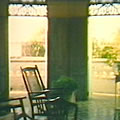How to Read Magical Realism

Most novels are realistic, not magically realistic, so we must revise our expectations when we open One Hundred Years of Solitude. What do we expect when we curl up with a novel? Plot, character, and setting are the building blocks of novels, and we expect them to operate according to the same rules that you or I recognize in our own lives. What happens when they don't?
PlotThis genre suspends realistic laws of cause and effect. In realistic novels, events occur for reasons that are eventually made clear and they lead logically to the conclusion of the novel. For example, in detective fiction, the clues lead logically to the criminal; in romantic fiction, the lovers' trials lead logically to the altar or the divorce court. In such novels, plot follows an "if/then" structure: "if" the murderer makes a mistake or the detective is smarter than the murderer, "then" the mystery will be solved; "if" the lovers can resolve their differences, "then" they will live happily ever after.
In magical realism, events don't follow our expectations of "if/then". Things often happen without an explanation, or for reasons that we don't expect. Remedios the Beauty rises to heaven with her sister-in-law's sheets. No reason is given, and her sister-in-law Fernanda does not wonder how this could happen. She accepts it without surprise, and only regrets that she has lost her sheets.
Characters
Magical realism also defies our expectation of fictional selves. In realistic novels, characters are given individualized names, personalities, and family histories. We identify with them because their specific humanity engages us, and their individuality resembles our own. What, then, do we do with the repeating generations of Buendías? Their repeating names and characteristics make them archetypes rather than individuals. This means that they are symbolic of human characteristics, rather than fully drawn individuals; unlike most fictional characters, their fates seem decided in advance. The José Arcadios are all body and the Aurelianos all mind. The women of the novel are also archetypes, or stereotypes: Úrsula is "the Earth Mother," Petra Cotes "the Whore with a Heart of Gold," and Remedios "the Beauty is the Angel too beautiful for this world."
Yet, despite the lack of psychological depth of the fated Buendías, we do identify with them, even as we recognize that they are impossible selves or, at the very least, radically different from most fictional characters, and from most people we know. Magical realism manages to have it both ways.
Setting
Objects and places in magical realist novels behave in ways that they could not in a realistic fiction. We have already seen blood that travels to its source, and a room where it is always March and always Monday. One final, beautiful example comes from García Márquez's short story, "Light is like Water." The narrator describes a kitchen that is flooded with light, as if light were water: "Household objects, in the fullness of their poetry, flew with their own wings through the kitchen sky." More wings, this time attached to household objects; simple, everyday objects take flight in magical realism. So, too, we readers may attach wings to our imagination, perhaps to discover that our own reality contains more magic than we had ever suspected.
Photo Credit: Courtesy of Films for the Humanities and Sciences



